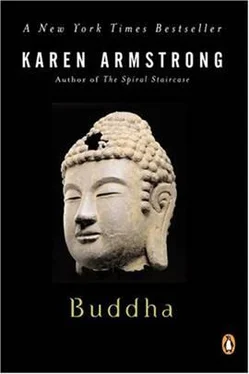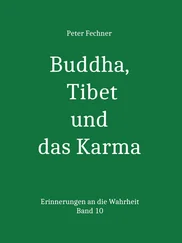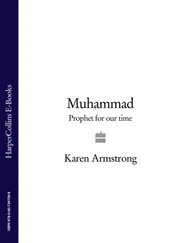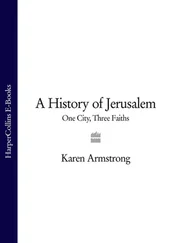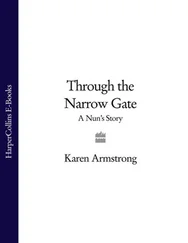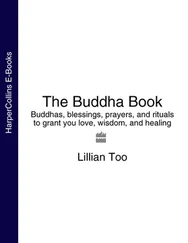Vedic faith was thus typical of pre-Axial religion. It did not develop or change; it conformed to an archetypal order and did not aspire to anything different. It depended upon external rites, which were magical in effect and intended to control the universe; it was based on arcane, esoteric lore known only to a few. This deeply conservative spirituality sought security in a reality that was timeless and changeless. It was completely different from the new Axial ethos. One need only think of Socrates, who was never content to accept traditional certainties as final, however august they might be. He believed that instead of receiving knowledge from outside, like the sruti Vedas, each person must find the truth within his own being. Socrates questioned everything, infecting his interlocutors with his own perplexity, since confusion was the beginning of the philosophical quest. The Hebrew prophets overturned some of the old mythical certainties of ancient Israel: God was no longer automatically on the side of his people, as he had been at the time of the Exodus from Egypt. He would now use the Gentile nations to punish Jews, each of whom had a personal responsibility to act with justice, equity and fidelity. Salvation and survival no longer depended upon external rites; there would be a new law and covenant written in the heart of each of the people. God demanded mercy and compassion rather than sacrifice. Axial faith put the onus on the individual. Wherever they looked, as we have seen, the Axial sages and prophets saw exile, tragedy and dukkha. But the truth that they sought enabled them to find peace, despite cruelty, injustice and political defeat. We need only recall the luminous calm of Socrates during his execution by a coercive state. The individual would still suffer and die; there was no attempt to avert fate by the old magical means; but he or she could enjoy a calm in the midst of life’s tragedies that gave meaning to existence in such a flawed world.
The new religions sought inner depth rather than magical control. The sages were no longer content with external conformity but were aware of the profound psychic inwardness that precedes action. Crucial was the desire to bring unconscious forces and dimly perceived truths into the light of day. For Socrates, men already knew the truth, but only as an obscure memory within; they had to awaken this knowledge and become fully conscious of it by means of his dialectical method of questioning. Confucius studied the ancient customs of his people, which had hitherto been taken for granted and had remained unexamined. Now the values that they enshrined must be consciously fostered in order to be restored to their original radiance. Confucius wanted to make explicit ideas which had previously been merely intuited, and put elusive, half-understood intimations into clear language. Human beings must study themselves, analyze the reasons for their failures and thus find a beauty and order in the world that was not rendered meaningless by the fact of death. The Axial sages scrutinized the old mythology and reinterpreted it, giving the old truths an essentially ethical dimension. Morality had become central to religion. It was by ethics, not magic, that humanity would wake up to itself and its responsibilities, realize its full potential and find release from the darkness that pressed in on all sides. The sages were conscious of the past, and believed that the world had gone awry because men and women had forgotten the fundamentals of existence. All were convinced that there was an absolute reality that transcended the confusions of this world-God, Nibbana, the Tao, brahman -and sought to integrate it within the conditions of daily life.
Finally, instead of hugging a secret truth to themselves as the brahmins had done, the Axial sages sought to publish it abroad. The prophets of Israel spoke to ordinary people in impassioned sermons and eloquent gestures. Socrates questioned everyone he met. Confucius traveled widely in an attempt to transform society, instructing the poor and humble as well as the nobility. These sages were determined to put their theories to the test. Scripture was no longer the private possession of a priestly caste, but became a way of transmitting the new faith to the multitude. Study and debate became important religious activities. There was to be no more blind acceptance of the status quo, and no automatic fealty to received ideas. Truth had to be made a reality in the lives of those who struggled to achieve it. We shall see how closely Gotama mirrored the values of the Axial Age, and how he brought his own special genius to bear on the human dilemma.
The Axial transformation was already well under way in India, however, when he left his home in Kapilavatthu. Historians and scholars note that all these innovative ideologies were created in the setting of the marketplace, which had acquired a new centrality in the sixth century B.C.E. Power was passing from the old partnership of King and Temple to the merchants, who were developing a different kind of economy. These social changes certainly contributed to the spiritual revolution, even if they cannot fully explain it. The market economy also undermined the status quo: merchants could no longer defer obediently to the priests and aristocracy. They had to rely on themselves and be prepared to be ruthless in business. A new urban class was coming into being, and it was powerful, thrusting, ambitious and determined to take its destiny into its own hands. It was clearly in tune with the newly emerging spiritual ethos. The plain around the river Ganges in North India, like the other Axial regions, was undergoing this economic transformation during Gotama’s lifetime. By the sixth century, the essentially rural society that had been established by the Aryan invaders so long ago was being transformed by the new iron-age technology, which enabled farmers to clear the dense forests and thus open up new land for cultivation. Settlers poured into the region, which became densely populated and highly productive. Travelers described the copious fruit, rice, cereal, sesame, millet, wheat, grains and barley that gave the local people produce in excess of their needs, and which they could trade. The Gangetic plain became the center of Indic civilization; we hear little about other parts of the subcontinent during Gotama’s lifetime. Six great cities became centers of trade and industry: Savatthi, Saketa, Kosambi, Varanasi, Rajagaha and Champa, and were linked by new trade routes. The cities were exciting places: their streets were crowded with brilliantly painted carriages, huge elephants carried merchandise to and from distant lands, and there was gambling, theater, dancing, prostitution and a rowdy tavern life, much of which shocked the people of the nearby villages. Merchants from all parts of India and from all castes mingled in the marketplace, and there was lively discussion of the new philosophical ideas in the streets, the city hall and the luxurious parks in the suburbs. The cities were dominated by the new men-merchants, businessmen and bankers-who no longer fit easily into the old caste system and were beginning to challenge the brahmins and ksatriyas. This was all disturbing but invigorating. Urban dwellers felt at the cutting edge of change.
The political life of the region had also been transformed. The Ganges basin had originally been ruled by a number of small kingdoms and by a few so-called republics which were really oligarchies, based on the institutions of the old clans and tribes. Gotama was born in Sakka, the most northerly of these republics, and his father Suddhodana would have been a member of the sangha, the regular Assembly of aristocrats which governed the Sakyan clansmen and their families. The Sakyans were notoriously proud and independent. Their territory was so remote that Aryan culture had never taken root there, and they had no caste system. But times were changing. Kapilavatthu, the capital of Sakka, was now an important trading post on one of the new mercantile routes. The outside world had begun to invade the republic, which was gradually being pulled into the mainstream. Like the other republics of Malla, Koliya, Videha, Naya and Vajji to the east of the region, Sakka felt threatened by the two new monarchies of Kosala and Magadha, which were aggressively and inexorably bringing the weaker and more old-fashioned states of the Gangetic plain under their control.
Читать дальше
